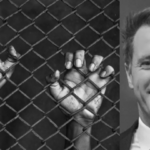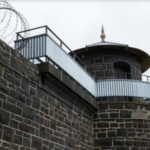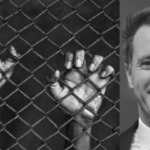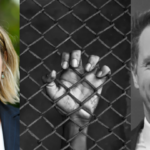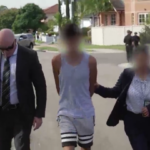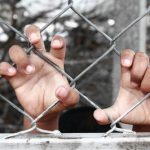Factcheck: Attorney General Claims, “By and Large, Children Are Not Gaoled in Australia”
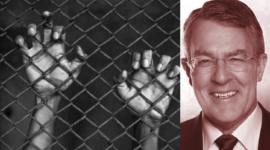
Federal attorney general Mark Dreyfus introduced new laws on 5 June that will make it a crime to share deepfake porn online if the artificially generated individual looks over 18, and the sharer was reckless as to whether they consented, while the offence would carry up to six years prison time.
ABC journalist Raf Epstein put it to Dreyfus the following day that due to what it entails, this law could likely see kids locked up, to which the AG replied, “potentially yes”, and then tried to downplay the suggestion with “children are treated differently to adults” in the justice system.
But Epstein pressed the nation’s chief lawmaker, who retorted, “it’s going to be a matter for courts but, by and large, children are not gaoled in Australia”, and added that “police will obviously exercise discretion”, as if this usually results in a tendency towards restraint on the part of law enforcement.
And the journalist raising the imprisoning of children didn’t have a personal gripe either. Rather he was echoing a decadeslong and exponentially growing constituency concern that the gaoling of kids is wrong on a number of levels, and Dreyfus’ casual dismissal of it reveals part of the problem.
Indeed, since the 2016 revelations around the brutalisation of First Nations kids at Don Dale child prison, the understanding has been that Australia has a problem with gaoling kids, and yet attorneys general and other ministers have resisted reform and rather passed laws that exacerbate the issue.
The UN doesn’t agree
Four Corners ran a documentary on Darwin’s Don Dale youth justice centre in July 2016. It depicted the brutalisation and torture of kids by adult youth justice officers. And it brought the debate around gaoling kids to the fore nationwide, while Australian youth prisons gained global notoriety.
Indeed, the early 2017 announcement that Australia would ratify the OPCAT treaty, a set of protocols to ensure detainee rights abuses are prevented by then attorney general George Brandis, is believed to have been in direct response to the fallout from the documentary.
And in January this year, Australia missed its third official deadline to implement the OPCAT system.
However, the UN Committee Against Torture, which is directly linked to the OPCAT, released its sixth periodic review of Australia in December 2022, which made a number of observations and recommendations about juvenile detention in relation to criminal convictions.
The issues included “the high number of children in detention, both on remand and after sentencing”, the low age that kids can be locked up, the high numbers of First Nations kids and youths with disabilities in detention, the use of solitary and the detaining of kids in adult prisons.
But in its June 2024 response, Australia didn’t explain it had made any moves to prevent the number of children being imprisoned, but rather asserted that locking up kids is “a measure of last resort”, and outlined that in 2021-22 only 18 percent of youths under justice supervision were in detention.
Civilly dead children
The Australian Institute of Health and Welfare Youth Justice in Australia 2022–23 report outlines that on an average day over that year 828 youths between the ages of 10 and 17 were locked up in Australian prisons.
But given the number of kids being released from and entering into the system, over the year 2022-23 the total amount of youths spending time inside was 4,605 children. And while on an average day 42 kids aged 10 to 13 were inside, over the entire year, 600 kids 10 to 13 spent some time in gaol.
And further, on an average day in 2022-23, there were 483 First Nations children inside Australia’s youth gaols, which accounted for 58 percent of detainees, while there were 342 non-Indigenous youths in correctional detention on any given day, which accounted for 41 percent of those inside.
And as for the UN having highlighted the disproportionate rates of Aboriginal and Torres Strait Islander kids inside, in December 2022, there were 2,599,298 youths aged 10 to 17 in this country, which included 148,694 First Nations kids in that age bracket, which is only 5.7 percent of the total.
Shirking responsibility
The UN further recommended Australia “raise the minimum age of criminal responsibility, in accordance with international standards”, as it is currently 10 in most Australian jurisdictions. And what that means is 9-year-olds and under can’t be held responsible or gaoled for breaking the law.
But Raise the Age and many other organisations and individuals are calling on state governments to up the age of criminality to at least 14, because youths under that age have been scientifically shown not to have developed the cognitive ability to comprehend lawbreaking and its consequences.
The Standing Council of Attorneys General (SCAG) is a body made up of the attorney general of each state and territory, as well as the federal chief lawmaker. And the SCAG and its predecessor the CAG started considering raising the age of criminality in 2018 and convening multiple working groups.
But the AGs from across the nation hadn’t been able to come to a concrete decision as yet, on whether the nation should stop imprisoning 10-year-olds. So, a further inquiry was launched in 2022 and last September it released its Age of Criminal Responsibility Working Group report.
And the fresh document comes to no overall recommendation to raise the age but instead, details considerations of the framework a jurisdiction that is planning to raise the age should consider to keep the community safe from the 10-, 11-, 12- and 13-year-olds, who can’t be locked up.
And for those who consider this means kids will be imprisoned when they don’t understand lawbreaking, the report notes that the prosecution “must prove that the child knew or had the capacity to know that their conduct was wrong before they can be held criminally responsible”.
Rhinestone cowboys
Earlier this year, NSW premier Chris Minns dropped it on the state that he was going to legislate to lock up more kids, via ensuring those who steal cars or break and enter on bail, have no opportunity but to be remanded and that those who post images of their crimes online go to gaol for longer.
On announcing the package, urban cowboy Minns made clear to the public that none of his tough-on-youth-crime measures had anything to do with that raising the age tripe, as his ministers were more than happy to see 10-year-olds in handcuffs.
Meanwhile, the Northern Territory has raised the age to 12, which was following a recommendation of the Royal Commission into the Protection and Detention of Children in the Northern Territory, which is an inquiry that must have confused Dreyfus as, by and large, there are no kids in gaol.
The ACT too raised the age to 12 last year, and will lift it again to 14 in 2025, while Victoria has determined to raise the age to 12 and progress on to 14 as well. And while Tasmania has also determined to raise the age to 14, no one can understand why it’s waiting until 2029 to do so.
But as for Queensland, the Northern Territory and Western Australia, they’re running the type of child gulags that Minns and NSW Labor are currently aspiring to.
In fact, Queensland has recently twice suspended its Human Rights Act to ensure more kids will end up inside.
And the Northern Territory beefed up its child bail laws a few years back to see its child prison population spike significantly. Don Dale prison is still operating and at times, that state’s child prisoner population is made up entirely of First Nations kids.
While WA’s only child gaol Banksia Hill has been torturing prisoners with prolonged stretches of isolation for years now, as well as having sent some of its inmates to spend time in Unit 18: the youth wing of Casuarina adult correctional facility.
An August 2022 SCAG communique outlined that “participants agreed the Age of Criminal Responsibility Working Group would continue to develop a proposal to increase the minimum age of criminal responsibility”, with particular attention paid to Indigenous overrepresentation.
Yet, the SCAG has instead produced a report to guide jurisdictions only if they decide to raise the criminal age of responsibility, which would, yet again, appear that Dreyfus and the other AGs have again decided to kick the can containing a solid decision on the issue a little further down the track.
Receive all of our articles weekly
Author

Paul Gregoire

